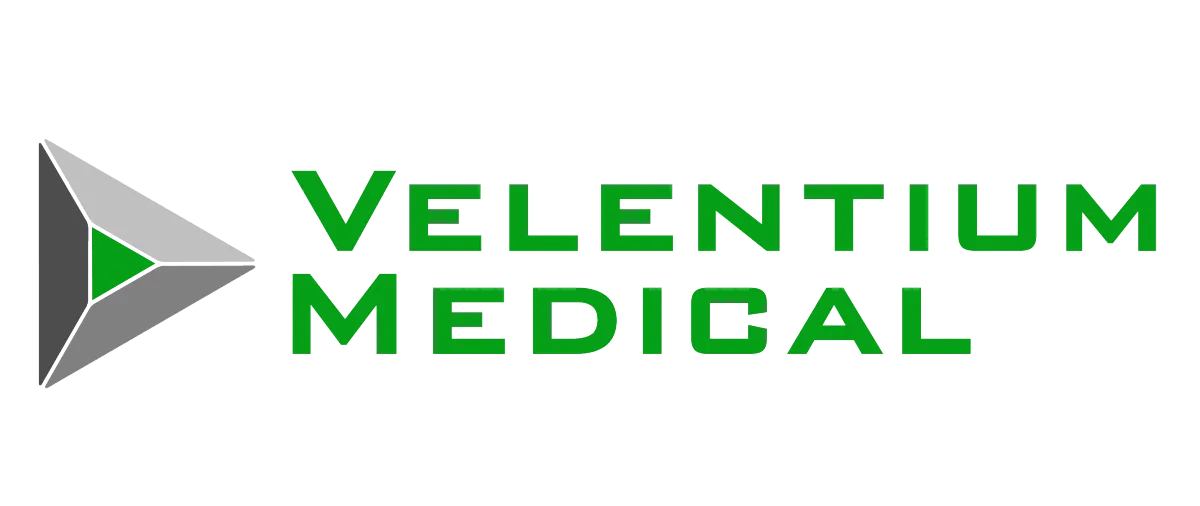
MedTech Startup Funding Guide: 7 Stages to Raise Right
Funding Smarter: How to Align Capital with Each Stage of Medical Device Development
Bringing a medical device to market is one of the most capital-intensive, highly regulated, and strategically complex journeys a startup can undertake. While innovation and clinical insight are essential, one of the most overlooked keys to success is aligning your funding strategy with the specific stage of product development.
Velentium’s whitepaper “Aligning Funding Strategies with the Seven Stages of Medical Device Development” breaks down how startups can avoid common financial pitfalls by securing the right funding at the right time—and from the right sources. Below, we explore those seven stages and the funding best practices that support them.
Stage 1: Initial Studies – Define the Problem
Before prototypes or regulatory filings, successful medical device companies begin with a well-defined clinical problem. Many founders, especially those from clinical or engineering backgrounds, focus on the technical side. But investors want to see market validation as much as technical feasibility.
At this stage, funding is often limited to personal savings, non-dilutive grants (like NIH or SBIR), and sometimes university incubators. The goal here is to answer: Is this a real problem worth solving, and who will pay for the solution?
Early investors want to see “skin in the game.” If you haven’t invested time or money into validating your concept, why should they?
Stage 2 & 3: Formal Requirements & Prototyping
With the problem validated, founders should begin documenting formal requirements (using standards like ISO 13485 or IEC 62304) and developing early prototypes. This is where technology feasibility and regulatory strategy converge.
Funding at this stage typically comes from friends & family, angel investors, and potentially non-dilutive SBIR Phase II grants. Startups often trip up by skipping documentation or diving into overly complex prototypes too soon.
Budget 2–3x more time and money than you think you’ll need. Regulatory and technical hurdles often take longer than expected.
Stage 4: MVP Development
The Minimally Viable Product (MVP) is not your final product—it’s the simplest version that proves your unique value and business case. Here, startups must strike a balance between building enough to demonstrate value without over-engineering.
Funding sources may include angel groups, early-stage VCs, and family offices interested in health innovation. A well-constructed MVP can significantly increase your company’s valuation and attract downstream investors.
Stage 5: Clinical Trials & Regulatory Approval
This is the most capital-intensive and high-risk stage. It includes preclinical studies, pivotal clinical trials, and regulatory submissions (e.g., FDA, CE Mark). You’ll also need a validated quality management system in place.
At this point, institutional venture capital, strategic medtech investors, and hospital venture arms become key players. Startups often fail here due to undercapitalization or unexpected clinical outcomes.
Stage 6: Product Launch & Commercialization
Once approved, your device is ready for commercialization. Now the focus shifts to manufacturing scale-up, sales infrastructure, and distribution strategy. It’s also time to think about HIPAA, GDPR, and cybersecurity compliance.
Funding may come from growth-stage VCs, strategic partnerships, or debt financing. Importantly, you’ll also begin to see revenue from early adopters. However, many companies fail by underestimating the operational costs of launch.
Stage 7: Post-Market Expansion & Growth
With your product in the field, the focus turns to expanding indications, growing revenue, and possibly preparing for acquisition or IPO. This is when you refine Version 2.0 based on real-world feedback and deepen market penetration.
Funding sources now include private equity, strategic acquirers, late-stage VCs, or even public markets. Having a strong IP portfolio and profitable operations makes your company especially attractive for acquisition.
Conclusion: Know Where You Are—and Plan for What’s Next
The path from concept to commercial success in medtech is not linear, and there’s no one-size-fits-all funding model. But one principle remains constant: funding must align with your stage of development.
Understanding the expectations of investors at each stage—along with the typical pitfalls—is essential. Whether you’re bootstrapping early research or raising a Series B to fuel commercialization, matching your fundraising strategy to your operational goals increases your valuation, de-risks your company, and keeps your focus where it matters most: building life-changing technologies that improve patient care.
